| Home |
| Acknowledgments |
| Conventions |
| Glossary |
| Maps |
| References |
| Links |
| Articles |
| Thumbnails |
| Species
list |
| Family |
| Next
species |
Additional Photos
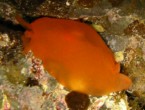
solid orange
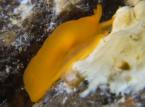
side
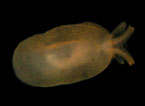
young, 6 mm
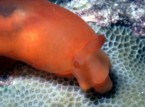
feeding
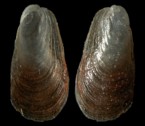
shell
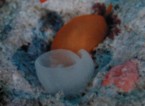
with egg mass
_______________
GALLERY

Berthellina delicata (Pease, 1861)
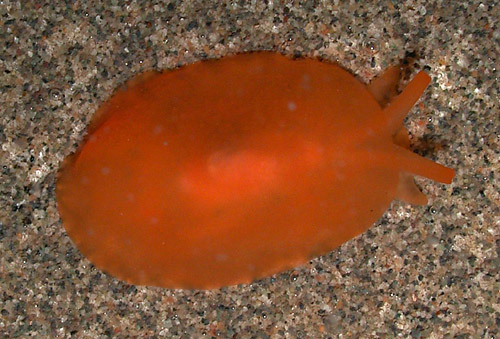
| Maximum size: 57 mm. Identification: This is a light to dark orange species, sometimes with a few scattered pale spots on the notum formed by the absence of orange pigment. It has a gelatinous texture. Natural history: Berthellina delicata is a common nocturnal pleurobranchid found in rocky habitats at protected to exposed sites and, occasionally, in Halimeda kanaloana beds. It occurs in tide pools and subtidally to depths of at least 9 m (30 ft). It feeds on a variety of scleractinian corals and sponges. (Note 1) It lays a cream, collar-shaped egg mass that hatches in five or six days in the laboratory. Distribution: Big Island, Maui, Lanai, Molokai, Oahu, Kauai, Niihau, French Frigate Shoals, Pearl & Hermes Reef, Midway and Kure (also Johnston Atoll): widely distributed in the Indo-Pacific. Taxonomic notes: This is the species listed as Berthellina citrina (Ruppell and Leuckart, 1831) in Kay, 1979; Bertsch and Johnson, 1981; and Hoover 1998. It is listed as Berthellina sp. in Hoover, 2006 (corrected in 5th printing). It's referred to as the "orange gumdrop" in Hoover, 1998 & 2006 as well as in other references. It's listed as Pleurobranchus delicatus Pease, 1861 in Ostergaard, 1955 and Edmondson, 1946. It's possible that Pleuobranchus rufus Pease, 1860 may have been this species (although Kay, 1979 considers it unidentifiable) in which case it was first reported from Hawaii in Pease, 1860. Photo: CP: spotted: Napili Bay; Nov. 9, 2003. Observations and comments: Note 1: On at least 14 occasions, we've observed them feeding on the corals Porites compressa and Porites lobata at night in shallow back-reef habitats at Hekili Point, Maui. On at least one occasion, we've seen them feeding on the coral Montipora capitata. On three occasions, we've seen them feeding on what appeared to be algal turf although it's likely that they were eating inconspicuous sponges or other animals embedded in it. Scott Johnson has also photographed them feeding on the ahermatypic coral Tubastraea coccinea, Porites sp., Leptastrea sp. and at least three species of sponges including Leucetta solida and Suberites aurantiacus (formerly Terpios zetiki). (Bertsch and Johnson, 1981) (see photos) |
| Thumbnails |
Species
list |
Family | Next species | Top |